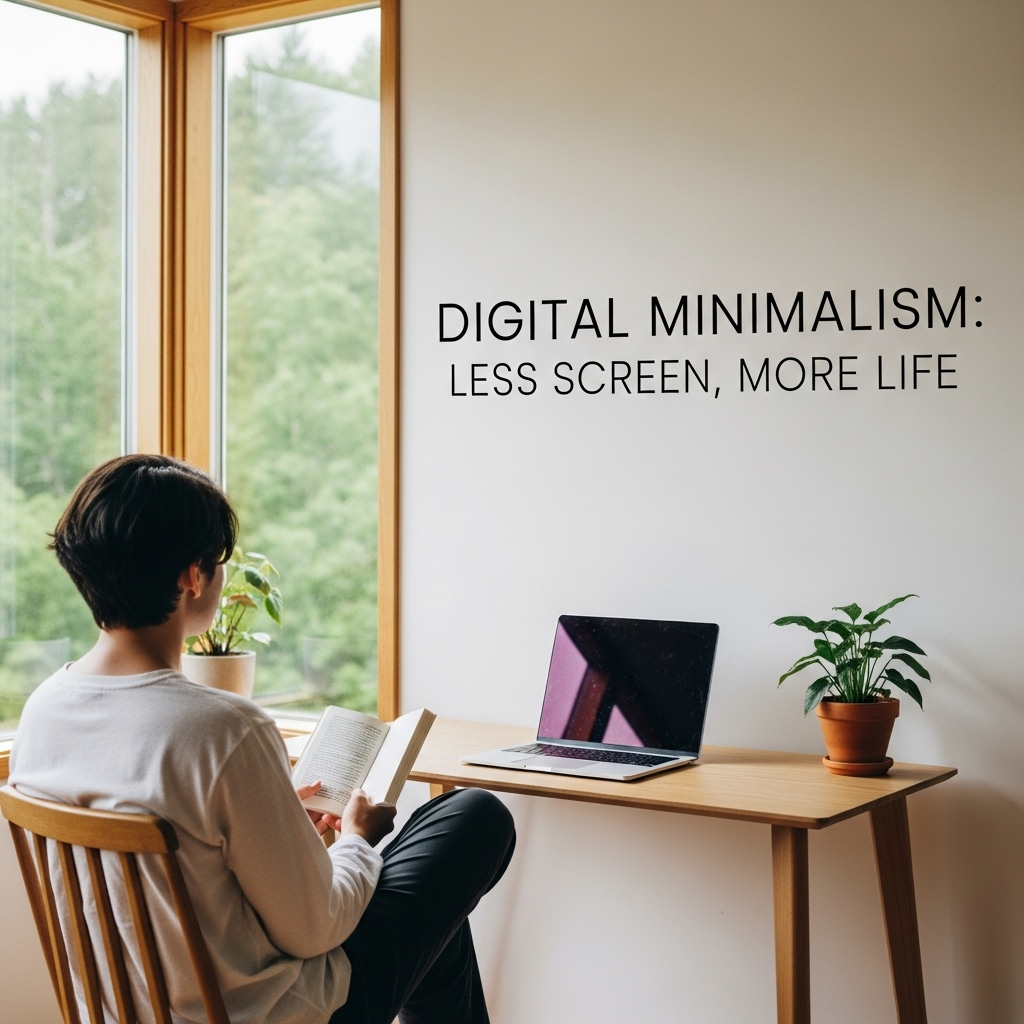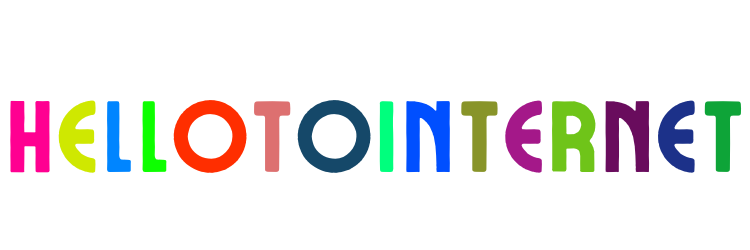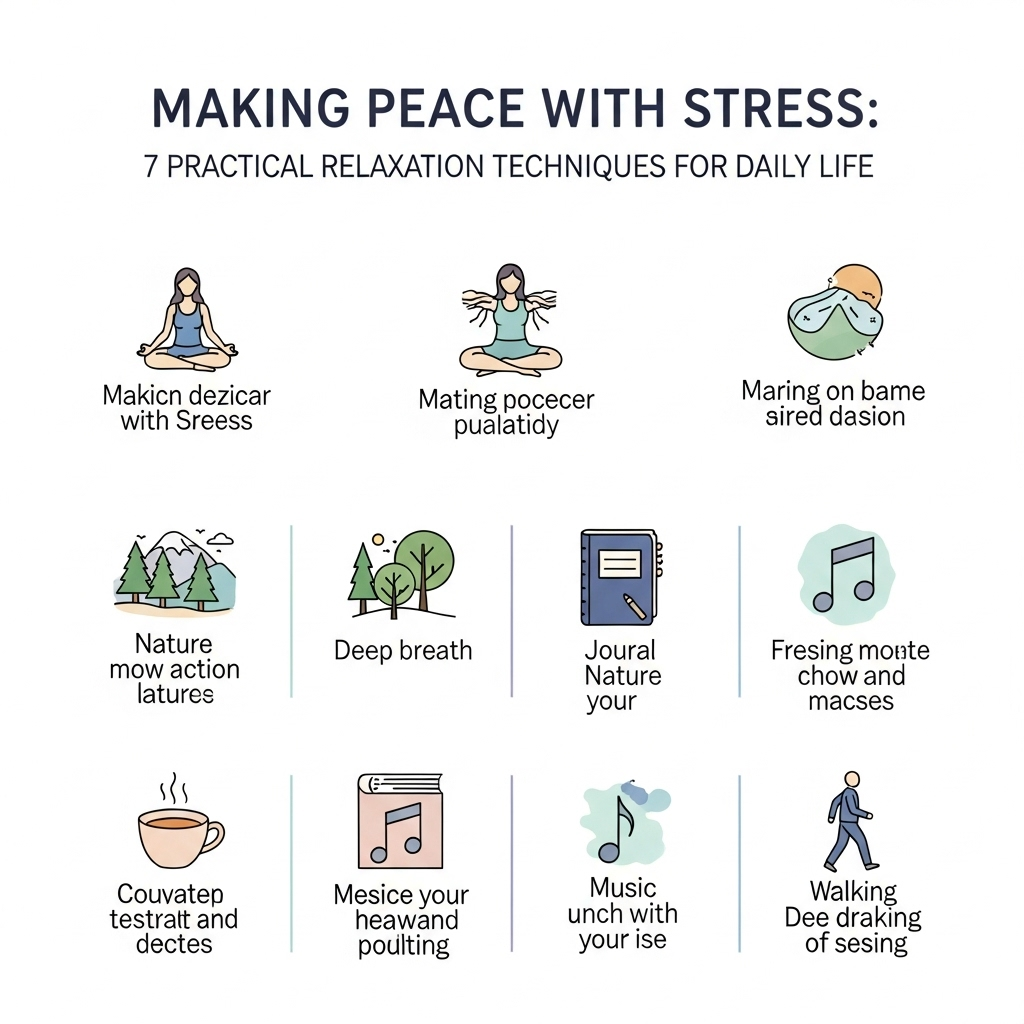Digital Minimalism: Less Screen, More Life

In an age where digital devices dominate nearly every facet of our daily existence — from the moment we wake up to the second we fall asleep — a quiet but powerful counter-movement is gaining momentum. Known as “Digital Minimalism,” this philosophy invites us to step back, reassess our relationship with technology, and reclaim our time, attention, and ultimately, our lives. Coined and popularized by computer science professor and author Cal Newport in his 2019 book Digital Minimalism: Choosing a Focused Life in a Noisy World, the concept offers not just a set of productivity hacks, but a comprehensive lifestyle overhaul designed for deeper fulfillment and intentional living.
What Is Digital Minimalism?
At its core, digital minimalism is a philosophy of technology use rooted in intentionality. It’s not about rejecting technology outright — after all, modern tools offer undeniable benefits — but about critically evaluating which technologies truly add value to your life and ruthlessly eliminating or minimizing the rest. As Newport defines it:
“Digital Minimalism is a philosophy of technology use in which you focus your online time on a small number of carefully selected and optimized activities that strongly support things you value, and then happily miss out on everything else.”
This stands in stark contrast to the default mode most of us operate in: reactive, distracted, and constantly pulled in multiple directions by notifications, algorithms, and social pressures. Digital minimalists don’t just reduce screen time; they redesign their digital environments to serve their deepest values — whether that’s creativity, relationships, physical health, spiritual growth, or uninterrupted solitude.
The Problem: Digital Clutter and Cognitive Overload
Why do we need digital minimalism? Because the current digital ecosystem is engineered to capture and monetize human attention — often at the expense of our well-being. Social media platforms, streaming services, news apps, and even workplace communication tools are designed using behavioral psychology to keep us scrolling, clicking, and consuming. The result?
- Attention fragmentation: Constant context-switching erodes our ability to concentrate deeply.
- Comparison fatigue: Curated highlight reels on Instagram or LinkedIn breed insecurity and dissatisfaction.
- Time blindness: Hours vanish into algorithm-driven feeds without our conscious consent.
- Emotional exhaustion: The 24/7 news cycle and outrage culture leave us perpetually anxious or numb.
- Erosion of real-world relationships: We’re more connected than ever — yet loneliness rates are soaring.
Neuroscientists have shown that heavy digital consumption rewires our brains, reducing gray matter in areas associated with empathy and decision-making, while increasing activity in regions tied to addiction and impulsivity. Psychologists warn of “technostress” — chronic stress induced by constant connectivity. Meanwhile, philosophers lament the loss of solitude — that fertile ground for self-reflection, creativity, and meaning-making.
We didn’t sign up for this. But we can opt out.
The Principles of Digital Minimalism
Newport outlines three core principles that form the foundation of digital minimalism:
1. Clutter Is Costly
Every app, notification, and digital habit carries a hidden cognitive tax. Even “useful” tools can become burdensome when used excessively or unconsciously. Digital minimalists recognize that clutter — whether physical or digital — drains mental energy and distracts from what matters.
2. Optimization Is Important
It’s not enough to simply delete apps or turn off notifications. True minimalism requires optimizing the tools you choose to keep. That might mean using website blockers during work hours, scheduling specific times to check email, or turning your smartphone into a “dumb phone” with minimalist launchers like Minimalist Phone or Simpler.
3. Intentionality Trumps Convenience
Just because something is easy doesn’t mean it’s beneficial. Digital minimalists ask: “Does this tool serve my values?” rather than “Is this convenient or entertaining right now?” This shift in mindset transforms passive consumption into active curation.
How to Practice Digital Minimalism: A 30-Day Reset
Newport proposes a practical, three-step process to transition into digital minimalism:
Step 1: The Digital Declutter (30-Day Reset)
For one month, step away from all optional technologies — anything not essential for work, health, or basic functioning. That includes social media, streaming platforms, gaming, news sites, and non-essential apps. Don’t just reduce usage — eliminate it completely.
This isn’t deprivation; it’s detox. The goal is to break compulsive habits and rediscover activities that generate genuine satisfaction without digital mediation — reading physical books, taking long walks, cooking meals from scratch, having face-to-face conversations, journaling, or practicing a musical instrument.
Step 2: Reintroduce Technology Selectively
After 30 days, slowly reintroduce technologies — but only those that pass a strict evaluation:
- Does this technology directly support something I deeply value?
- Is this the best way to support that value?
- What’s my plan for using it to maximize benefit and minimize harm?
For example, someone who values staying connected with distant family might reintroduce WhatsApp — but only for scheduled weekly video calls, not for constant messaging. A photographer might keep Instagram — but only for portfolio sharing, not for endless scrolling.
Step 3: Optimize and Ritualize Usage
Once you’ve chosen which tools to keep, define clear rules for their use. Examples:
- Check email only twice a day — 10 AM and 4 PM.
- Use social media only on desktop, never on mobile.
- No screens during meals or one hour before bed.
- Designate “tech-free zones” in the home (e.g., bedroom, dining table).
- Schedule “digital Sabbaths” — full days offline each week.
The key is to transform technology from a background noise into a foreground tool — something you control, not something that controls you.
The Benefits: What You Gain When You Unplug
Those who embrace digital minimalism report profound improvements across multiple dimensions of life:
➤ Mental Clarity & Focus
Without constant interruptions, the brain regains its capacity for deep work — sustained, undistracted concentration that leads to high-value output and creative breakthroughs. Many report thinking more clearly, solving problems more effectively, and feeling less mentally fatigued.
➤ Emotional Well-being
Reduced exposure to comparison traps and outrage content leads to greater contentment. People feel calmer, more grounded, and less reactive. Anxiety and depressive symptoms often decrease significantly.
➤ Richer Relationships
When screens recede, presence increases. Conversations deepen. Eye contact returns. Families reconnect over board games instead of Netflix. Friendships are nurtured through shared experiences, not just likes and comments.
➤ Rediscovery of Leisure
Digital minimalists often rediscover “high-quality leisure” — activities that engage the mind and body in meaningful ways: hiking, painting, woodworking, volunteering, gardening, playing sports, attending live music. These activities generate lasting joy, unlike the fleeting dopamine hits of digital entertainment.
➤ Time Abundance
Perhaps the most surprising benefit: people suddenly find they have more time. Not because they’re doing less — but because they’re no longer wasting hours in digital quicksand. That reclaimed time becomes space for passion projects, side hustles, learning new skills, or simply resting.
Real-Life Examples and Success Stories
- Sarah, 34, Marketing Executive: After her 30-day declutter, Sarah deleted Instagram and TikTok. She replaced evening scrolling with pottery classes and morning meditation. Within three months, she reported sleeping better, feeling less anxious, and even getting promoted — thanks to improved focus at work.
- James, 28, Software Developer: James turned off all non-essential notifications and adopted “theme days” — Mondays for coding, Tuesdays for learning, etc. He built a personal project he’d been putting off for years and launched it as a side business.
- The Nguyen Family: They instituted “Screen-Free Sundays.” The whole family cooks together, goes on hikes, and plays card games. Their kids, initially resistant, now look forward to it — and have developed stronger sibling bonds.
These aren’t outliers. Thousands worldwide — from CEOs to students, artists to engineers — are quietly opting out of the attention economy and designing lives aligned with their true priorities.
Criticisms and Counterarguments
Some argue that digital minimalism is elitist — that not everyone can afford to disconnect, especially gig workers or remote employees tethered to digital platforms. Others say it’s unrealistic in a hyper-connected world.
But digital minimalism isn’t about complete abstinence. It’s about agency. Even within constraints, individuals can set boundaries: muting group chats, batching communications, using grayscale mode to reduce visual appeal, or negotiating tech-free hours with employers.
Another critique: “Won’t I miss out?” The answer, according to minimalists, is yes — and that’s the point. Missing out on trivial, algorithmically curated content is the price of gaining back your soul. As author Annie Dillard wrote: “How we spend our days is, of course, how we spend our lives.”
Beyond Personal Practice: Cultural and Systemic Shifts
While individual action is vital, digital minimalism also points toward broader societal change. Advocates call for:
- Ethical design standards that prioritize user well-being over engagement metrics.
- Legislation to curb addictive features (like infinite scroll or autoplay) and protect children online.
- Workplace policies that respect digital boundaries — e.g., no emails after 6 PM, meeting-free days.
- Education reform that teaches digital literacy and attention management from an early age.
Movements like “Time Well Spent” (founded by former Google designer Tristan Harris) and organizations like the Center for Humane Technology echo these calls, urging tech companies to align their products with human values rather than corporate profits.
Getting Started: Your Digital Minimalism Toolkit
Ready to begin? Here’s a starter kit:
🔹 Audit Your Digital Life: List every app, platform, and device you use. Rate each on a scale: “Essential,” “Useful,” “Distracting,” or “Harmful.”
🔹 Delete Ruthlessly: Uninstall anything rated “Distracting” or “Harmful.” Archive accounts if needed — you can always return.
🔹 Set Boundaries: Use app timers, grayscale mode, Do Not Disturb schedules, and website blockers (Freedom, Cold Turkey, StayFocusd).
🔹 Create Analog Rituals: Replace morning scrolling with journaling. Swap evening YouTube with reading fiction. Trade lunchtime Twitter with a walk outside.
🔹 Track Progress: Keep a simple journal. Note how you feel each week — mood, energy, focus, connection. Let data guide your choices.
🔹 Find Community: Join digital minimalism groups online or locally. Accountability and shared experience make the journey easier.
Conclusion: Reclaiming Your Attention, Reclaiming Your Life
Digital minimalism is more than a productivity trend — it’s a rebellion against the attention economy. It’s a declaration that your time, your focus, and your inner life are too precious to be auctioned off to the highest bidder. In choosing less screen, you don’t lose out — you gain depth, presence, creativity, and peace.
Technology should serve humanity — not the other way around. By adopting digital minimalism, you take back control. You stop living by default and start living by design. You trade distraction for devotion, noise for nuance, consumption for creation.
Less screen doesn’t mean less life. It means more life — richer, deeper, and truly your own.
So ask yourself today: What would you do with an extra hour of focused attention? Who would you become if you weren’t constantly interrupted? What parts of yourself have you neglected in the glow of the screen?
Turn it off. Step away. Breathe. Begin again.
Your life is waiting — offline.
“The ability to perform deep work is becoming increasingly rare at exactly the same time it is becoming increasingly valuable in our economy. As a consequence, the few who cultivate this skill, and then make it the core of their working life, will thrive.” — Cal Newport
“Almost everything will work again if you unplug it for a few minutes… including you.” — Anne Lamott
— End —



